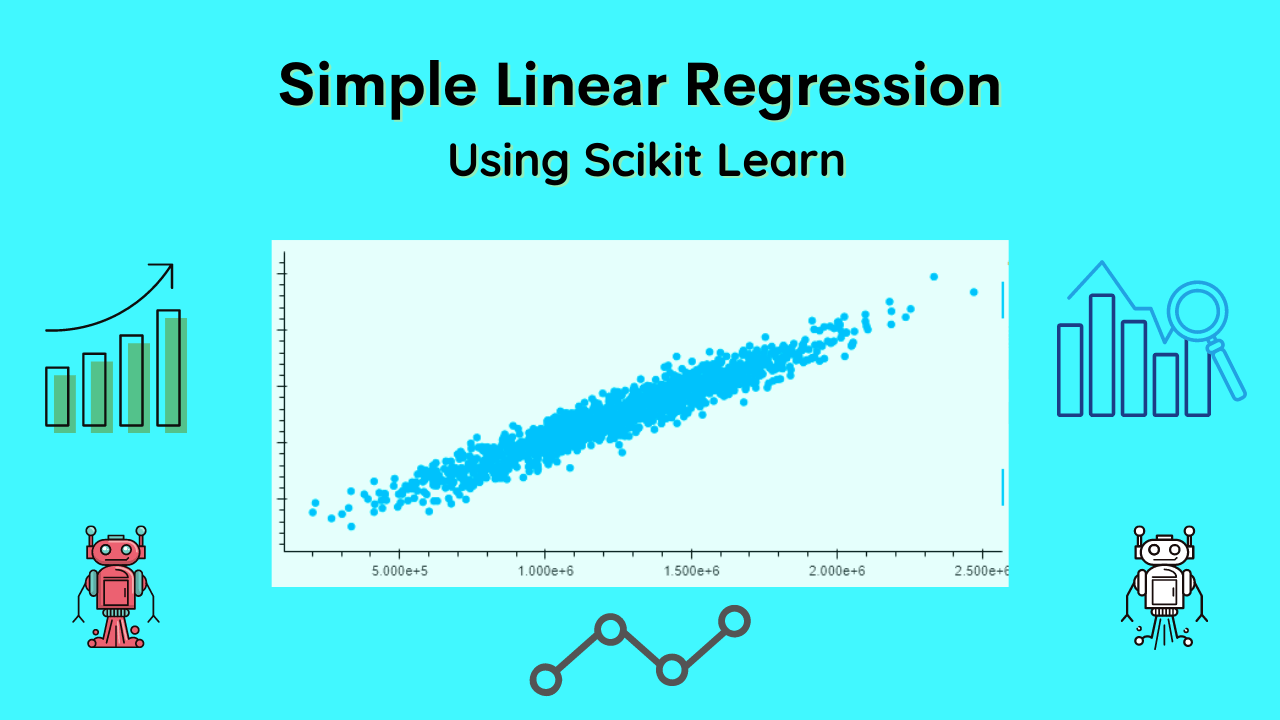In this Blog Post, we will explore the top 10 Python libraries for machine learning you can use to make your machine learning task very easy and efficient.
These libraries provide a wide range of data analysis and machine learning capabilities, from preprocessing and data visualization to deep learning and natural language processing.
Python has become the most preferred language for machine learning and data science, This is because of the wide range of libraries available for it and we will look at Python’s top 10 libraries from it.
Related Article: What are the Types of Machine Learning? – in Detail
Which Python Library is used for Machine Learning?
There is no single python library that is used for Machine Learning?, there multiple libraries are available for Machine Learning operations.
Python libraries for machine learning include Scikit-learn, TensorFlow, Theano, Keras, and PyTorch and many more, we will see each one in detail.
Scikit-learn is a popular library for machine learning that is built on top of NumPy, SciPy, and Matplotlib.
TensorFlow is a popular library for machine learning that is built on top of Theano.
Theano is a popular library for machine learning that is built on top of NumPy and CUDA.
Keras is a popular library for machine learning that is built on top of TensorFlow.
PyTorch is a popular library for machine learning that is built on top of Torch.
Why are Python Libraries for Machine Learning Important?
Python libraries for machine learning are important because they provide a wide range of algorithms for data mining and predictive modeling.
They also provide pre-trained models and support for vector operations. This makes it easy to get started with machine learning, and to explore different models and algorithms.
Python is one of the most popular programming languages today, due to its ease of use and wide range of applications.
In the world of data science and machine learning, Python is a primary language for many reasons: its libraries and modules for scientific computing, data analysis, and machine learning are comprehensive and powerful, it has a large and supportive community, and it is easy to learn for beginners.
Related Article: Backpropagation in Machine Learning – Complete Guide
Top Python Libraries for Machine Learning
Python is a versatile language that has been gaining popularity in the field of machine learning, There are many libraries in Python that are helpful for machine learning, Here are the top 10 Python libraries for machine learning.
1. NumPy
NumPy is a powerful Python library used for scientific computing, It provides an efficient way to manipulate arrays of data.
NumPy also includes a number of mathematical functions that can be used to calculate scientific results.
NumPy arrays are one-dimensional arrays, meaning that they can only store a single dimension of data. However, they can be easily manipulated to store data in multiple dimensions. For example, an array with two dimensions could store data in the form of a grid, like this:
NumPy arrays can also be easily converted into standard Python lists, so they can be used with most standard Python functions.
2. SciPy
It is a library for scientific computing in Python, which is the advance version of Numpy and it can do large number of mathematical and engineering operations
SciPy provides a wide range of mathematical and statistical routines, as well as a large collection of tools for data analysis.
3. Matplotlib
Matplotlib is a plotting library for Python that enables you to create charts and graphs.
It has a wide variety of features and options, making it a versatile tool for data visualization, and this is the first foremost usable library in python for Data Visualization.
You just need to learn how to use Matplotlib to create basic charts and graphs, You will also learn how to customize your charts to better suit your needs.
4. Scikit-learn
Scikit-learn is a popular machine learning library for Python, It provides a wide range of algorithms for data analysis, including regression, classification, and clustering.
Scikit-learn is easy to use and has a large community of users, Scikit-learn is a powerful machine learning library that is widely used in the scientific community.
It provides a wide range of algorithms for data mining and machine learning, including support for deep learning.
It is good for basics as well as advance machine learning modeling using scikit-learn, and you can use scikit-learn to build a classifier to predict the outcome of a race.
It contains a wide variety of algorithms for regression, classification, and clustering, as well as tools for preprocessing and feature engineering.
5. Statsmodels
It is a Python module that provides a wide variety of statistical models and tools for data analysis, It is an open-source Python module that allows users to explore data, estimate statistical models, and perform statistical tests.
Statsmodels also includes a number of convenience functions for working with datasets and for performing common statistical operations.
It can be used to fit and analyze linear and nonlinear models, including Generalized Linear Models (GLMs), time series models, and Bayesian models.
Statsmodels is a powerful tool for data analysis and modeling, It is open source software released under the liberal MIT license, and it is written in Python, making it easy to use.
6. IPython
IPython is a powerful tool for data analysis and scientific computing, It provides a REPL (read-eval-print loop) environment for interactive computing, as well as a library of high-level commands for data analysis and visualization.
IPython can be used as a Python shell, or as a complete scientific computing environment.
7. Theano
Theano is a Python library for deep learning that allows you to define, optimize, and evaluate mathematical expressions involving multi-dimensional arrays efficiently.
It was developed by University of Montreal professor Yoshua Bengio, along with other researchers in the Deep Learning community.
Theano has been widely used in cutting-edge research projects, such as Google’s Neural Machine Translation project and Facebook’s Torch. It is also the foundation for the popular Python libraries TensorFlow and Keras.
It is a powerful tool, but it can be challenging to learn and there are many resources available online to help you get started with Theano for ML.
8. TensorFlow
TensorFlow is a powerful open-source software library for data analysis and machine learning, Developed by Google, it enables developers to build sophisticated machine learning models.
It is particularly well-suited for deep learning, a type of machine learning that involves training artificial neural networks to recognise patterns in data.
TensorFlow has proved to be a very popular library, with over 10,000 stars on GitHub. It has also been used to create some impressive machine learning models, such as the Google Brain.
It allows you to build custom algorithms for modeling and prediction. It is particularly well-suited for complex tasks such as natural language processing and image recognition.
9. PyTorch
PyTorch is a library for machine learning that is quickly gaining in popularity, It has many features that make it an attractive choice for developers, including:
PyTorch is a deep learning framework that is becoming more and more popular for machine learning.
It is especially useful for networks that are large and require a lot of computation, PyTorch library for machine learning and it can be used to improve your ML workflows.
PyTorch also has a very user-friendly interface, which makes it easier to learn and use than some of the other frameworks.
10. Keras
Keras is a powerful and easy-to-use deep learning library for Python, and It provides a high-level interface for building neural networks, and wraps popular numerical libraries such as TensorFlow and Theano.
Keras is highly use to implement deep learning models, to get master in ML and Deep learning you need to learn different layers and architectures that are available in Keras.
Keras it use to build various types of deep learning models, including Convolutional Neural Networks (CNNs), Recurrent Neural Networks (RNNs), and Long Short-Term Memory Networks (LSTMs).
Conclusion
In conclusion, I have learned a lot about the web and coding, and I am excited to continue learning and growing in this field. I am grateful for the opportunities that have been presented to me and am looking forward to what the future holds.
These are some of the most important Python libraries for machine learning, Each of these libraries has its own strengths and can be helpful in various ways, Choose the ones that fit your needs and get started with machine learning today.
These libraries provide a vast array of machine learning and data science capabilities, They can enable you to tackle complex tasks and achieve better results. So, if you are looking to get started in machine learning with Python, be sure to check out these libraries!
Related Article: A Complete Guide on Linear Regression for Data Science
For More Libraries Watch this Video:

Meet Nitin, a seasoned professional in the field of data engineering. With a Post Graduation in Data Science and Analytics, Nitin is a key contributor to the healthcare sector, specializing in data analysis, machine learning, AI, blockchain, and various data-related tools and technologies. As the Co-founder and editor of analyticslearn.com, Nitin brings a wealth of knowledge and experience to the realm of analytics. Join us in exploring the exciting intersection of healthcare and data science with Nitin as your guide.










